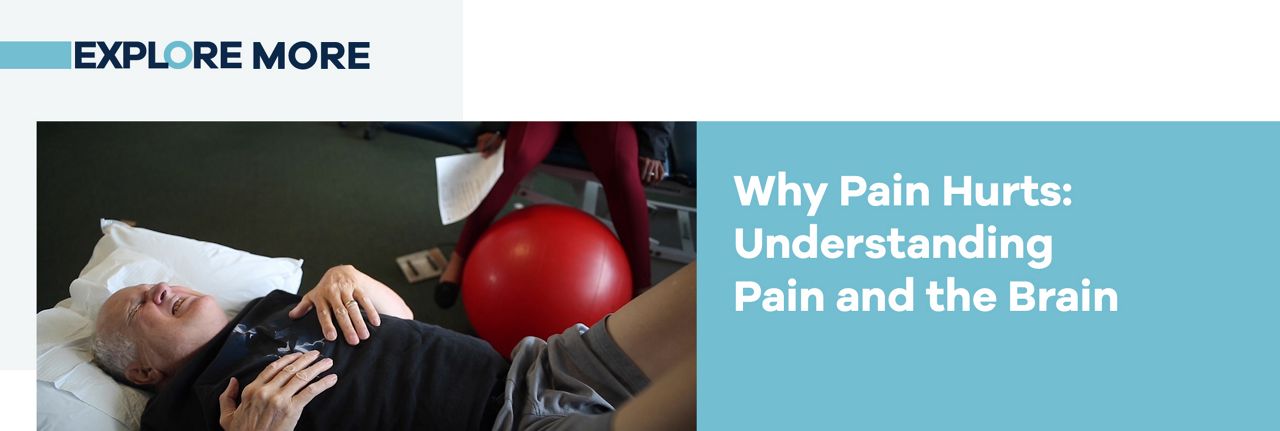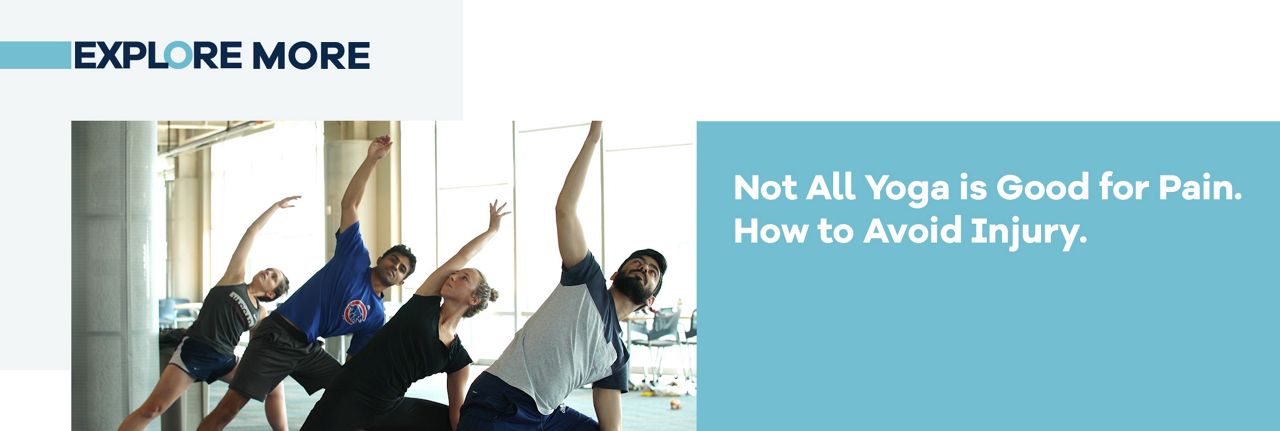This story is the third installment of a three-part Exploring Your Health episode delving into the science of pain and the latest methods of treatment. All three parts are available now:
Meditation and mindfulness are mainstream techniques used by many to cope with stress, anxiety and depression. Now, as we’re learning more about pain and its close ties to our emotions, more people are focusing in on the mind-body connection as a way to cope with it all. In this third installation of our exploration of pain, we visit a wellness studio in Durham, North Carolina, where Pamela Moore has been doing yoga therapy and mediation after a harrowing bout with brain cancer.
“I'd been moving my mom into assisted living and I thought it was just major stress, and had horrible headaches. And I even said to my husband, ‘can stress hurt your brain? Because I feel like my brain hurts’,” said Moore.
She eventually went to the emergency room, where doctors found and promptly cut out a tennis-ball sized tumor in her brain. More than a year of treatments, chemotherapy and radiation, followed that tumor removal.
“My doctor said the one thing you can do to help your cancer not grow back is eat well and exercise. And they kept saying that every time I was there,” said Moore.
A life-long dancer, Moore eventually followed doctors’ advice to get moving again. But she jumped back in too quickly. “I'll think I can do something, like I took a Nia class and I was moving my body and dancing and my body doesn't have that strength. And so I re-injured myself and hurt my hand, right now dealing with hip injuries.”
She discovered that meditation helped her control how bad the pain feels. “I'd always been, not always consistently, a meditator,” said Moore. “I started going to a Buddhist temple and visiting them and enjoying that.”
There is a growing body of evidence that points to the benefits of meditation in treating pain. Duke Health Psychologist Laura Porter is one of those researchers.
“When you have pain, naturally the focus is on the pain, right? How much it hurts, what it means for you right now and in the future,” said Porter.
For many chronic pain sufferers, focusing on the pain may actually amplify it. In clinical circles it is called catastrophizing. “That's where you really focus on the pain, exaggerate the threat value, and minimize your ability to cope with the pain,” said Porter. “So when we see people doing a lot of pain catastrophizing, we know that's an important target of intervention.”
The theory is, the person’s pain may be wrapped up in their emotions. Porter says mindfulness techniques, like meditation, put pain into its proper context.
“They start becoming more aware of where their attention is caught up at any given moment, this can help them disengage from negative thinking and negative emotions about pain. Also, I think a lot of times people will try to avoid the pain experience. They’ll push it away. And so, they really get caught up in the struggle of pushing it away,” said Porter. “However, when you can just notice your pain, you might notice that it waxes and wanes, it comes and goes, and that you actually can manage it. And that it's not catastrophic at any given time, usually.”
Porter said she has seen relaxation or mindfulness actually eliminate pain in patients. “For other people it doesn't eliminate it, but it lessens it,” said Porter. “Even that can be really helpful, just knowing that there is something that they can do.”
Integrative yoga therapist Cheryl Fenner Brown said with yoga therapy, it’s the breathing combined with holding positions - that encourages mindfulness.
“For people that have chronic and persistent pain, it's almost like your brain is misunderstanding the signals that your body is sending it,” said Fenner Brown. “Yoga allows there to be an interruption in that sort of misunderstanding of the pain signals. And when you slow down, and you really try to breathe consciously, you can allow the brain to, sort of, reset."
Moore credits yoga in helping her step up her meditation and in understanding her body better. “I'm being more present to it, just in day-to-day life.”
Mindfulness, Porter said, should be a part of the treatment plan offered to pain sufferers. “Studies have found that there are lower levels of stress hormones like cortisol and that there's improved immune functioning as well. That being said, I don't know if there are any definitive studies that show this is the magic bullet for pain.”
There is no magic cure-all for pain, but understanding how the mind and our emotions impact how we perceive pain is a powerful thing.
We explored the growing field of devices, like virtual reality, to help us connect our brains and bodies, but even that alone isn’t the answer.
The experts we spoke to say the answer, moving forward lies in tailoring pain treatment to each individual patients’ needs. We’ve seen the one-box-fits-all approach just doesn’t work.





